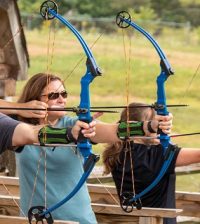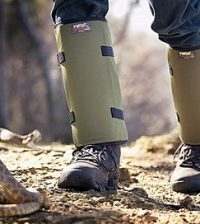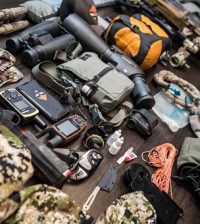A Buying Guide to Field Gloves
Combat armour has existed for millennia, and while it has hugely evolved, its basics remain the same – to protect the wearer without compromising motion and dexterity. If your job includes handling guns, knives, or heavy equipment, then you know how important it is to protect your fingers, palms and knuckles. For that, you need a pair of specifically designed gloves that offer unmatched protection for your hands from extreme environments and can help you get a better grip on your gear.
Your hands are used to manipulate and operate the controls of any weapon, military vehicle and mission systems. To keep them well protected, buy field gloves that can meet the needs and requirements of military operatives. They come with a host of modern materials, construction techniques and technologies, and are engineered for military personnel and law enforcement officers. To help you choose the perfect pair for your needs, here is what you need to know.
Different Types

Not all tactical gloves are the same. Some are designed specifically for combat, others are made to accommodate weaponry on the shooting range, and some offer an extra level of weather protection. Here are some of the most common ones on the market these days.
Insulated
These gloves are designed to be suitable for harsh environments. They keep hands exceptionally warm; however, high insulation sometimes results in limited dexterity, so keep that in mind before buying a pair.
Snipers’ Gauntlets
They are made for people operating sniper rifles and for that reason they offer more dexterity.
Hard Knuckle Gloves
These gloves are made for hand-to-hand combat and offer excellent abrasion and weather resistance.
Needlestick Gloves
They are designed to be used in situations where the risk of encountering hypodermic needles is very high. These gloves resist punctures by needles and prevent the pricking of the skin.
Points to Consider
Construction
Just like with any tactical gear, whether it’s a belt, a pair of tactical gloves or else, the primary material plays a big role in determining its quality. Most of the gloves are crafted around shells composed of genuine or synthetic leather or nylon.
Inserts and Overlays
These are the secondary materials used in the construction of gloves, the ones that provide comfort and performance-enhancing qualities.
Breathability
Gloves need to breathe well to prevent irritated fingers and hands. When the inside of the gloves becomes hot, they should be able to ventilate the air, absorb moisture and reduce sweating. If you’ve ever tried to grip something with sweaty hands, then you know how important it is to keep your hands cool and dry in the field.
Padding and Armour
This can include anything from padding along the tops of the fingers and back of hands, along the palms to protect against impacts and sharp objects, and more.
Materials

The materials used for military gloves are specifically chosen to offer protection, comfort and a level of tactility. To choose the right pair for you, it’s important to consider what kind of activity you’ll be using your gloves for.
Leather
This is by far the most common tactical glove material. It’s flexible, comfortable and water resistant and is used in boots, holsters, bags, and other pieces of gear thanks to its outstanding durability.
Nylon
It’s renowned for its toughness and flexibility and is used for tactical gear, from boots to belts, packs and more. When it comes to gloves, this material can be paired with leather at joints and other flex points for improved dexterity.
Kevlar
Gloves with kevlar are slash and cut-resistant. They protect well against blades and other sharp edges, which makes them an excellent solution for military members and law enforcement officers.
Thinsulate
This is an insulating material that is thin, dexterous, and effective. It is a better insulator than fleece because it’s thinner.
Thermoplastic Rubber
Rubber is a versatile, water-resistant material, and is often used for padding. In tactical gloves, thermoplastic rubber is used for palm padding and provides a high-friction grip, but can be found on the knuckles, too.
Neoprene
This material is used for making wetsuits, it’s water-resistant, but also acts as a great insulator. Neoprene gloves are a great choice to keep your hands dry.
Nomex
It’s a material used in the fire industry. Gloves made with this material are fire-resistant and are often used by military personnel as well as welders and foundry workers.
Additional Features
Most field gloves feature a simple, straightforward design; however, some come with additional features such as the following.
Touchscreen Compatible Fingertips
Taking off your gloves when you need to use your phone or any other touchscreen device is not a great idea when time is valuable. That’s why the fingertips of many tactical gloves these days are designed to be compatible with a touchscreen, so the user can use modern-day devices without the hassle of taking off the gloves.
Adjustable Wrists
Fit is important. A pair of gloves that fits well is comfortable, and agile and makes you feel more natural when using your gear in the field. Adjustable wrist straps provide a personalised fit and allow you to take the gloves off or put them on easily.
Final Thoughts
Alongside using military gloves for duty, combat or shooting, they have a range of potential applications they can be used for. Thanks to their strong, hardwearing construction, they are a great choice for the automotive industry, paintball and/or airsoft, motorcycle riding, winter protection, recreational shooting, mountain biking, and more. Whatever you use them for, make sure they feel natural and comfortable and allow you to feel your gear as you use it.










